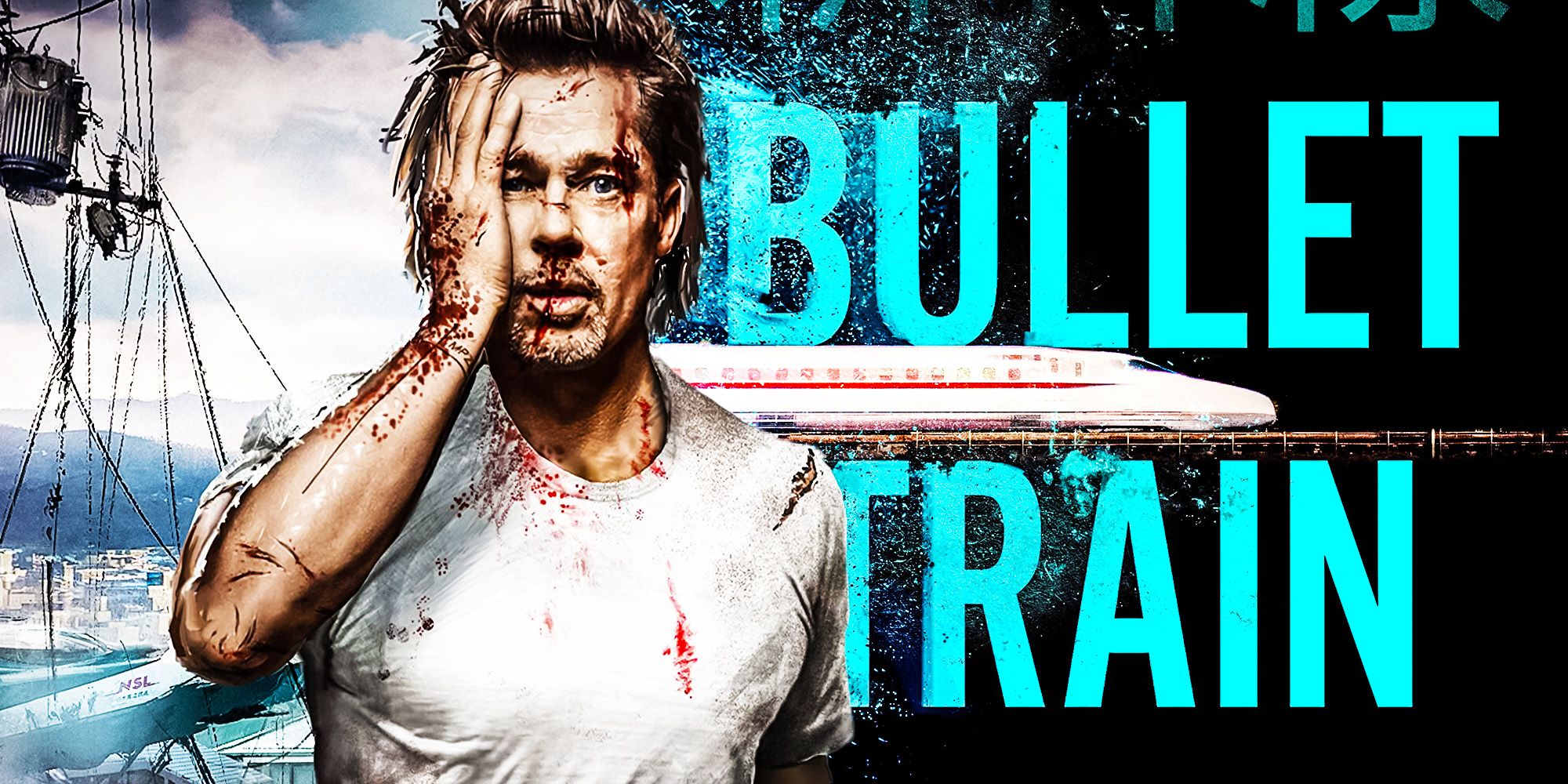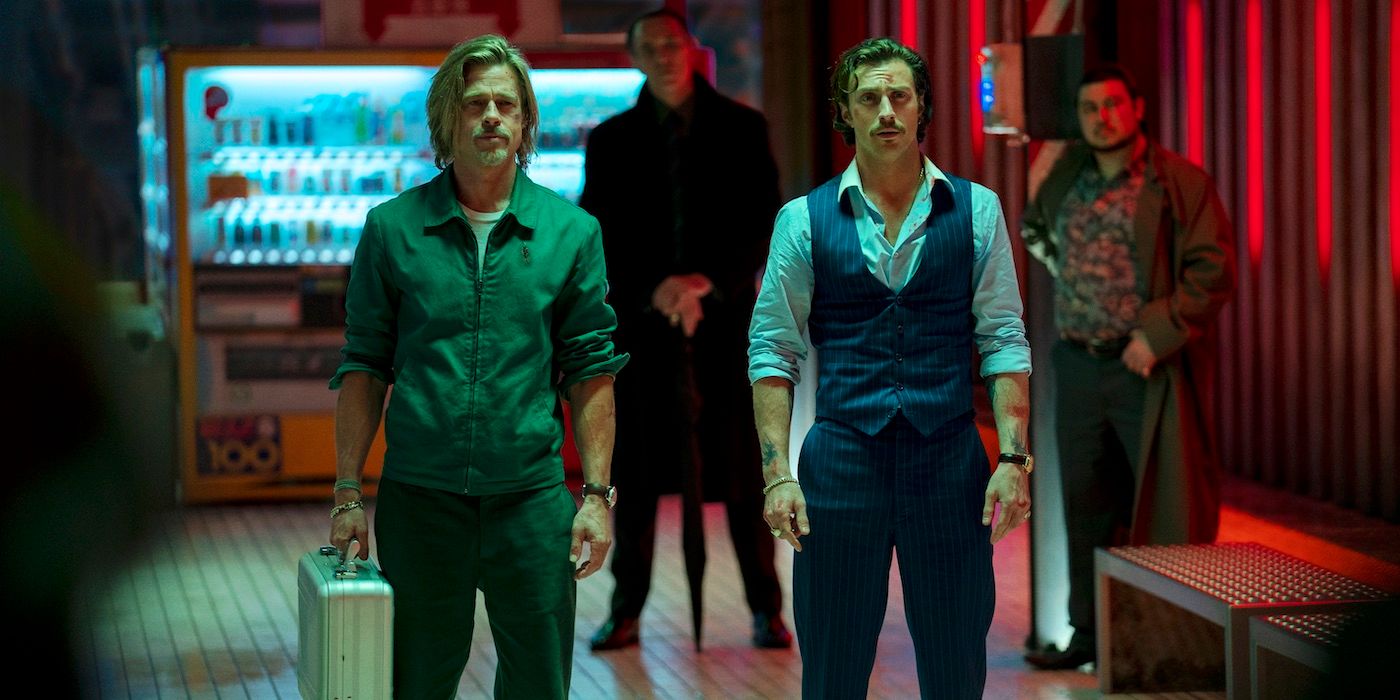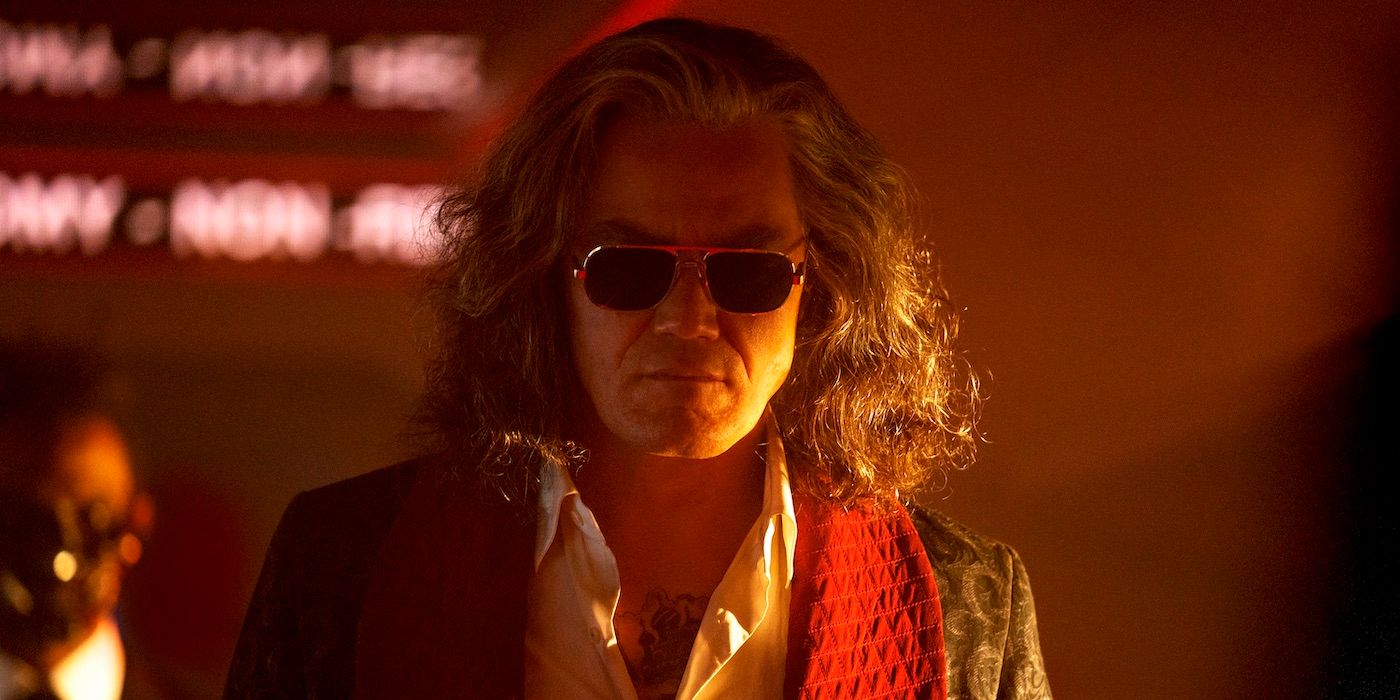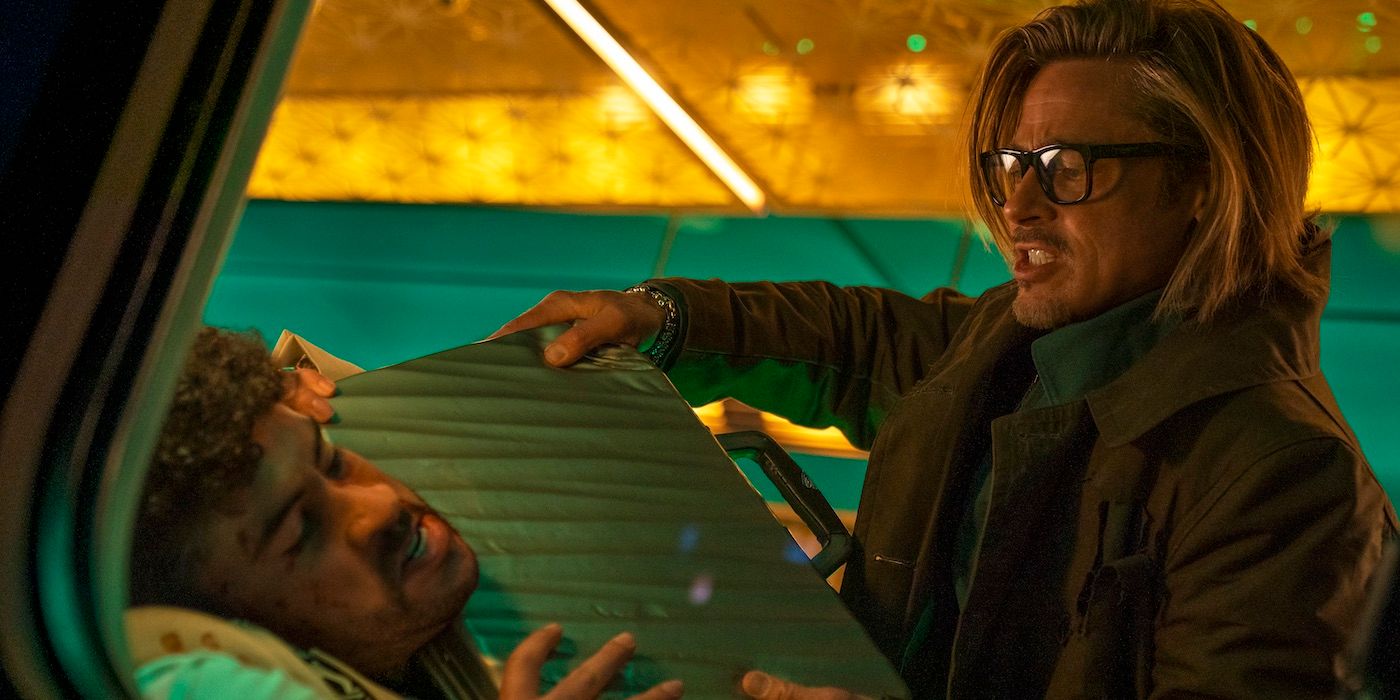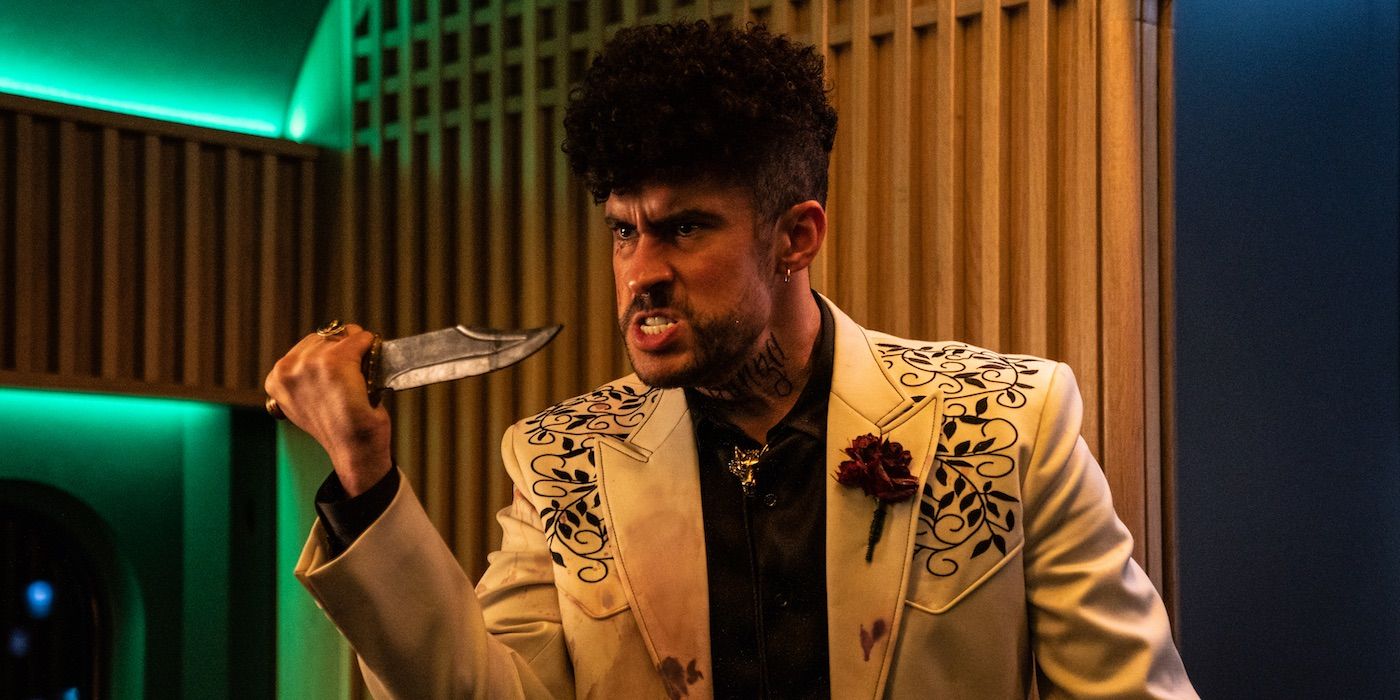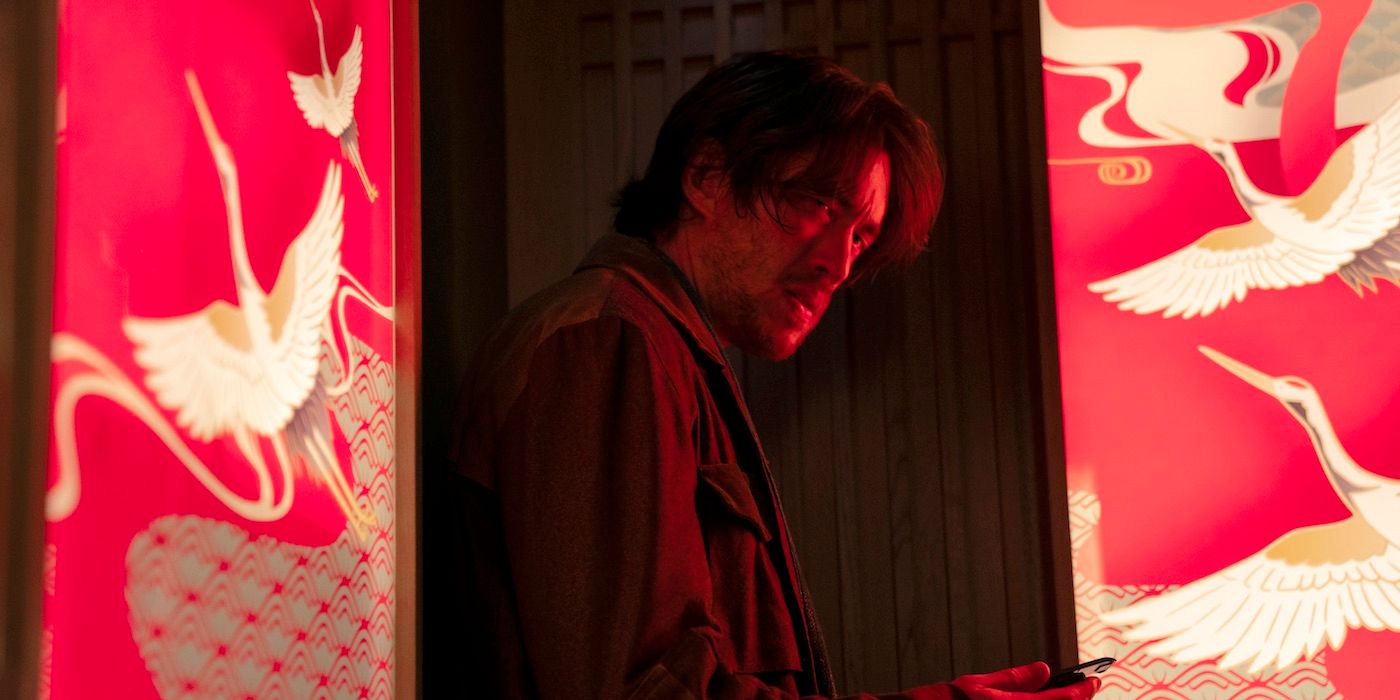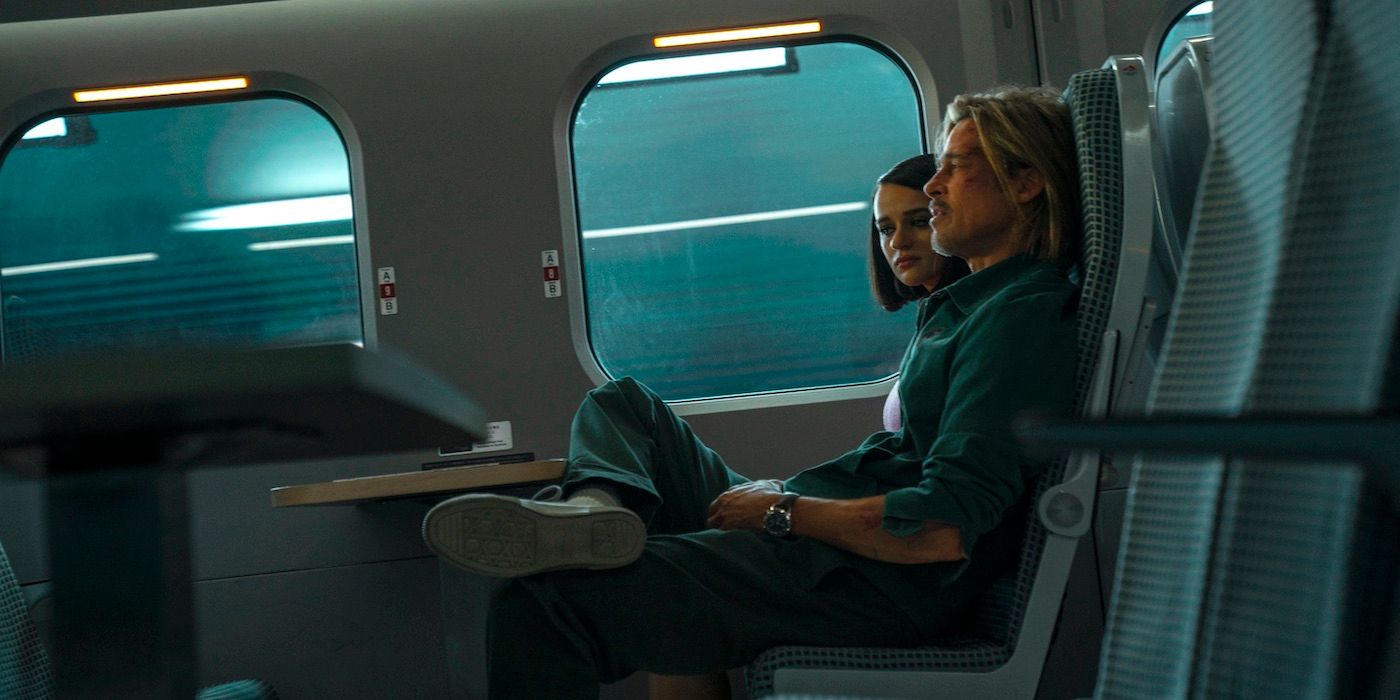Warning: This post contains major spoilers for Bullet Train.
Bullet Train movie vs. book comparison — here are the biggest changes from the novel. Directed by David Leitch from a screenplay by Zak Olkewicz, Bullet Train’s story is adapted to the big screen. A slick action thriller featuring plenty of comedic moments and a star-studded cast, Bullet Train is like any other film adaptation, changing certain aspects of the source material in its move to a different medium.
Bullet Train is based on Kōtarō Isaka’s incredibly successful novel. First published in 2010, the book was first translated to English in 2021 by Sam Malissa, and has gone on to receive mostly positive reviews from fans and critics alike. Film adaptations of novels must always walk a fine line. Too similar and the film risks being a too-loyal adaptation without its own personality and style; too different and the movie might put off book readers. While it’s difficult to find a balance, movie adaptations tend to make alterations to the source material when bringing it to the big screen.
Such is the case with Bullet Train. While the action film — which stars Brad Pitt and Aaron Taylor-Johnson, among several others — stays true to many aspects of Isaka’s book, there are plenty of key story and character tweaks made specifically for the Hollywood adaptation of Bullet Train. Here is every major change made from book to movie, including the Prince’s identity and backstory.
Bullet Train’s Novel Is Called Maria Bītoru
Typically, film adaptations of novels maintain the same title as their source material. Bullet Train, on the other hand, is unique in that the movie’s title is actually lifted from the novel’s translation. Originally titled Maria Bītoru, which translates to Maria Beetle, Isaka’s novel was given a new name, Bullet Train, for the English-language version of the book. When Bullet Train was first translated to English, the title was likely changed to highlight the fact that the action of the story and the characters’ interactions all take place inside a bullet train. In the story, Maria is the name of Ladybug’s handler, who is portrayed by Sandra Bullock and tasks the assassin with retrieving the briefcase full of money.
White Death’s Character Is An Addition To Bullet Train
The character who brings everyone together in the end is the criminal leader White Death, who came up with a plan that would bring all of the assassins together on the bullet train in the hopes that they would all kill each other. This plot began as revenge for the assassins’ involvement — directly or otherwise — in the murder of the White Death’s wife. However, the White Death is not a character in Isaka’s novel. Rather, the central mob boss in the book is Yoshio Minegishi, who has a reputation for being ruthless. In Bullet Train, Minegishi is more of a minor character, who is betrayed and killed by the White Death in his rise to power. The White Death ultimately replaces Minegishi as the cold-blooded crime boss who is not to be crossed, striking fear in the hearts of nearly everyone on the train. White Death’s addition to Bullet Train completely changes the ending, which now sees Kimura’s father exact his own revenge on Michael Shannon’s character for killing his wife and Minegishi.
The Prince Is A Teenage Boy In The Bullet Train Novel
In the novel, the Prince is Satoshi Oji, a teenage boy who manipulates everyone around him. He’s lethal, cruel, and capable of outsmarting others to get what he wants because he poses as a schoolboy. In the movie, the Prince is a gender-swapped version of the original character, though Joey King’s iteration maintains the same deadly traits, though the book version of the character is far more of a sociopath. Naturally, the Prince being a teenage girl in Bullet Train changes the backstory of her character, who is angry with the White Death for favoring his son (played by Logan Lerman) over her despite the Prince being the more worthy choice as successor to her father’s criminal organization. The Prince plots her revenge on the White Death, which alters the character’s journey in important ways. The vengeance here is personal as the character’s book counterpart simply wants to have a chance to find and fight the mob boss just because. The Prince’s plot in the film is also rooted in sexism — specifically, the underestimation of a young woman who was overlooked by her father in favor of her brother. The change makes for an intriguing and somewhat more nuanced addition, especially considering the majority of the cast is comprised of men.
Ladybug Is A Young Assassin Who’s Not As Experienced
In Bullet Train, Ladybug is a seasoned assassin. He’s been on several jobs, but considers his luck to be some of the worst in the world. Ladybug has been around long enough to know that if he’s somehow involved in the case, something will go wrong, be it an accidental stabbing or death. He always seems to be in the wrong place at the wrong time, but he’s hyper-aware of that because Ladybug has loads of experience in the field. In Isaka’s novel, however, Ladybug is younger in age (Brad Pitt is 58 years old) and, while the bullet train job isn’t his first, he’s less of a seasoned professional assassin. That said, the remainder of Ladybug’s personality traits remain intact, with the trained killer constantly bringing up his bad luck and opening up discussions on moral philosophy regarding murder and life. Ladybug proved himself a capable operative in the field, fighting the other assassins with finesse.
The Wolf Gets An Expanded Story In The Film
In the film, the Wolf heads all the way to Japan to find Ladybug, the assassin he believes had a hand in the death of his wife and the rest of the guests at his wedding. While Hornet is the one who killed the Wolf’s wife, he’s intent on seeking revenge on Ladybug as well because he also holds him responsible. In the novel, the Wolf has a smaller role. While he also prevents Ladybug from leaving the train at the stop he’s meant to get off, the book version of the Wolf only recognizes the assassin because Ladybug once fought him outside a bar.
The Bullet Train Book Characters Are Japanese
While the film includes a largely American cast, the source material is made up of Japanese characters in the primary roles, including Ladybug, whose real name is Nanao. To that end, Leitch’s film has been accused of whitewashing, the practice of casting white actors in previously non-white roles. The film itself is still set in Japan, but there is only one primary character who is of Japanese descent: Andrew Koji, who plays Kimura. The majority of the bullet train’s passengers, including Channing Tatum, who makes a cameo, are also white. David Innoue, the executive director of the Japanese American Citizens League, and others have criticized the film for not taking the opportunity to cast Japanese actors in the main roles.
The Bullet Train Has A Different Final Destination In The Book
In the movie, Ladybug boards the bullet train in Tokyo, with the final destination being Kyoto. However, Isaka’s novel sees the train traveling from Tokyo to Morioka. It’s unclear why this particular change was made, though perhaps Kyoto is more recognizable to general audiences. Interestingly, the change in Bullet Train means the characters in the action movie are traveling south versus north to Morioka like in the book.

